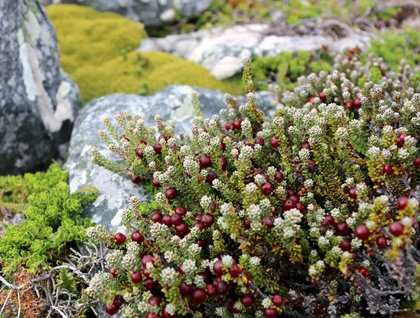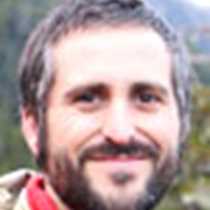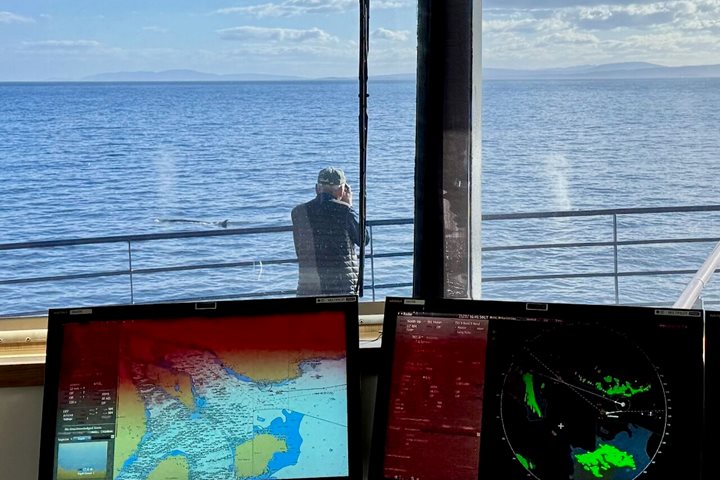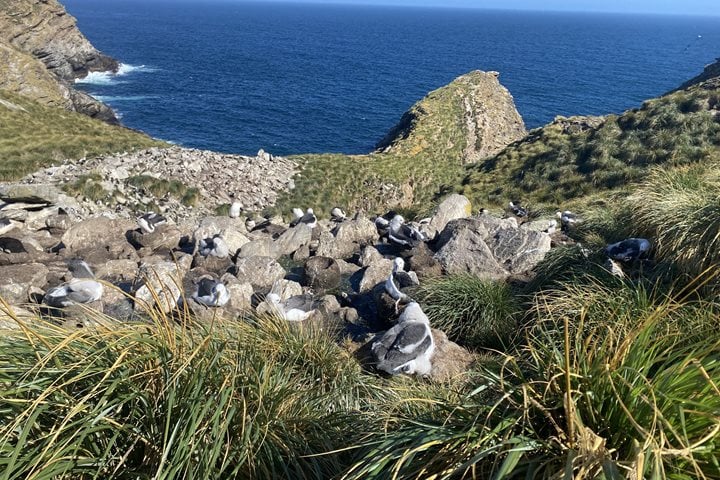Today we returned to the Falkland Islands on National Geographic Explorer. When we were last here, we visited the islands north of West Falkland Island, but this time through we made our way to East Falkland and came alongside at Stanley, the islands’ capital. Stanley is a decidedly British town. Union Jacks wave patriotically at passers-by from homes with quaint English gardens. Bartenders pull proper pints for patrons in wee neighbourhood pubs. Even the heath and peat that blanket the surrounding hills evoke memories of the craggy moorlands far to the north. But of course, Stanley has a flavour all of its own—the colourful houses are made of painted “wriggly” (corrugated) iron, Land Rovers replace Fiats, and upon closer inspection, the heath reveals itself to be diddledee and deliciously sweet tea berries, plants unique to these southern latitudes.
There were many activities to engage in while in town. Some guests chose to take a “city” highlights tour that wound its way among Stanley’s narrow streets and windswept shores, stopping periodically to photograph historic shipwrecks or noted homes. Others visited a local sheep farm to watch sheep being sheared in the traditional way—by hand. Still others enjoyed a pleasant walk among the hills overlooking town. Here, high above Stanley, we sat among caves that sheltered hapless Argentine soldiers awaiting a British advance that was never to come, and skirted giant craters left from naval artillery shells that flew decades earlier. Even with all the activities, there was still plenty of time to stroll leisurely through town, popping in at the Victory pub to hoist a pint with the locals, or visiting the wonderful Falklands museum to learn about the colourful history of these remote and windswept islands. And those that chose to walk back to the ship were delighted to see Peale’s dolphins cavorting in the harbour. All in all, our time in Stanley was a wonderful way to cap off an incredible expedition.







